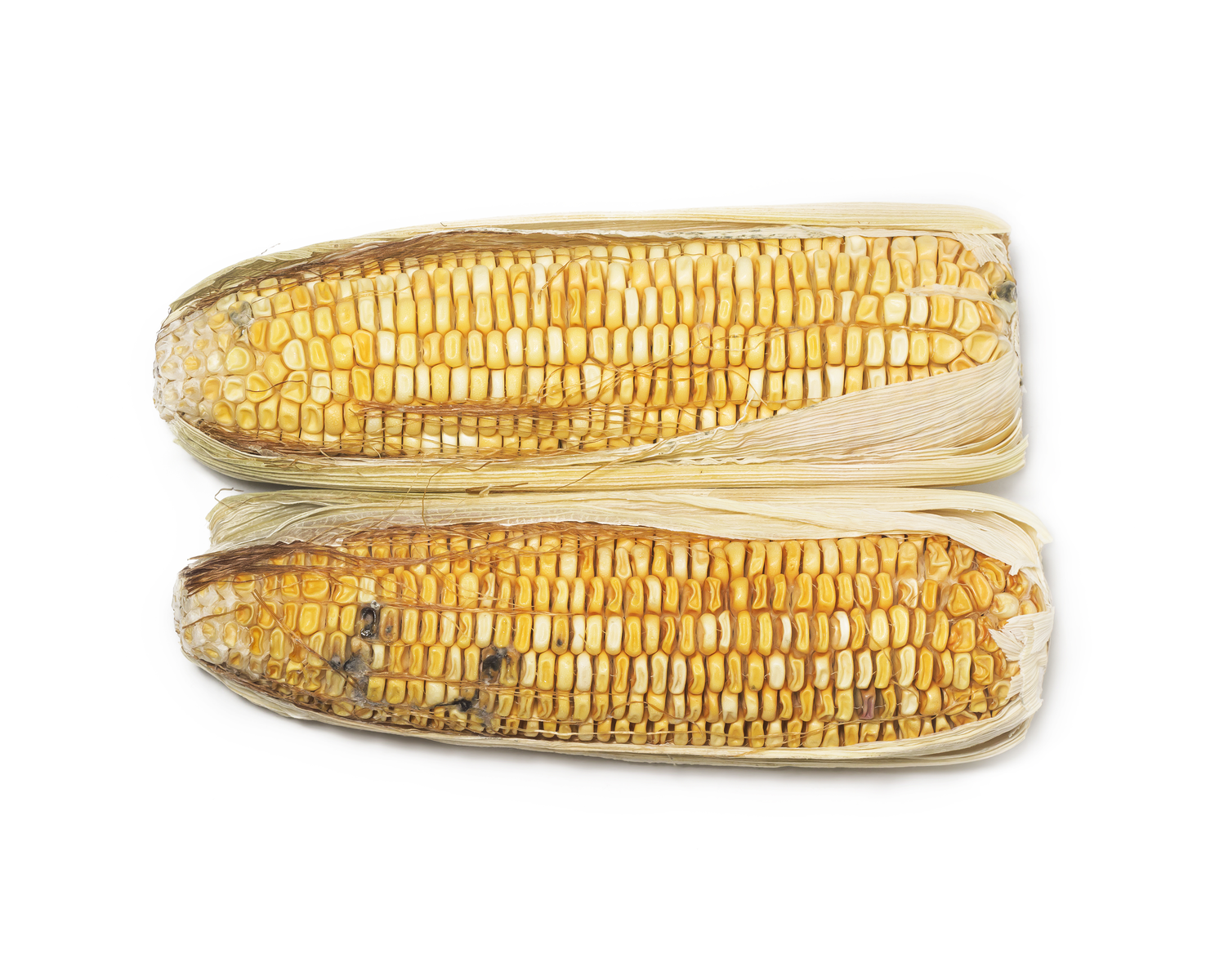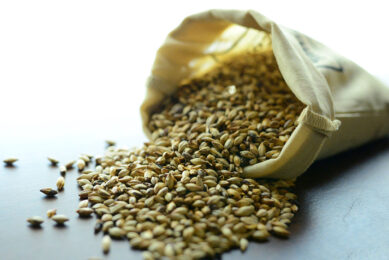Mycotoxins in feed: Co-contamination rules

Animal diets are composed of several types of ingredients. Each of which could be contaminated with one or more mycotoxins. Therefore, co-contamination is more the rule than the exception.
Among the vast number of mycotoxins there is one large family of metabolites which have gained importance over the last few years: type B trichothecenes. The high prevalence in cereal grains around the world, their potential risks to livestock animal production and the resulting economic losses have made this group of toxins a main focus for scientific investigation worldwide. Biomin Mycotoxin Survey results from the past ten years show that of the more than 33,000 samples sourced worldwide, 43% were contaminated with two or more mycotoxins.
The figure climbs to 61% for compound feed, making co-contamination the rule, not the exception. Co-contamination may be a result of several factors. It is known that most Fusarium species are able to produce a number of different mycotoxins simultaneously. For instance, deoxynivalenol (DON) often co-occurs with other type B trichothecenes such as the acetylated forms 3-ADON and 15-ADON, as well as nivalenol (NIV) and its acetylated derivative fusarenon X (FX). In addition, single commodities may also be contaminated by several fungi simultaneously and a complete diet is composed of various components. These factors all increase the variety of mycotoxins that make their way into livestock feed.
Focus on contaminated corn
Within this year’s survey a total of 3,244 samples from 50 countries were analysed from January to June 2015. The most advanced mycotoxin detection method available commercially, a multi-target method based on liquid chromatography-mass spectrometry/mass spectrometry (LC-MS/MS, Spectrum 380®), was used to measure 455 samples and provides a comprehensive insight of the mycotoxin co-contamination levels. Out of this data set, 76 corn (maize) samples from different countries were analysed to determine the occurrence and correlations of type B trichothecenes including 15-acetyldeoxynivalenol (15-ADON), 3-acetyldeoxynivalenol (3-ADON), deoxynivalenol (DON), DON-3-glucoside (D3G), and nivalenol (NIV).
Table 1 illustrates the occurrence of type B trichothecenes, average contamination of positive samples, maximum and median concentrations. Results indicate that deoxynivalenol is the most frequently occurring mycotoxin, present in 70% of the 76 samples, and having the highest average and maximum concentrations, at 1646 and 12728 parts per billion (ppb), respectively. These levels clearly exceed the EU recommended risk threshold level for feed for pigs, 900 ppb. The masked form of DON, DON-3-glucoside, was present in 96% of all DON-positive samples. The average concentration of D3G was approximately 20% of the concentration of DON-positive samples. Nivalenol was found in more than half of all samples (58%) at the lowest average concentration (58 ppb). Studies have shown that nivalenol can exert a higher toxicity to both human and pig epithelial cells than DON.
Majority has more than one mycotoxin
The two acetylated forms of deoxynivalenol, 15-ADON and 3-ADON, occurred in 33% and 21% of samples, respectively. The average value of 15-ADON at 334 ppb is only one-fifth of the average concentration observed for deoxynivalenol. However, research has shown that 15-ADON can exert a higher toxicity than DON in pig epithelial cells. In terms of co-occurrence, 68% of the tested samples were contaminated with two or more Type B trichothecenes which may result in synergistic effects as well as individual toxic effects. The median number of type B trichothecenes per sample was three, common to 29% of all maize samples. These observations illustrate that the presence of several Fusarium species in one sample is quite common.
Overall, correlation was found among all type B trichothecenes in all maize samples. The highest correlation was observed between DON and 15-ADON (correlation coefficient of 0.978), followed by DON and D3G (correlation coefficient of 0.964). In general, there is a high correlation between DON, its acetylated derivatives as well as between DON and its glucoside. The correlation of NIV in combination with all other type B trichothecenes was lower, as these metabolites are normally not produced by the same fungal isolate. Nevertheless, their co-occurrence shows that the presence of several Fusarium species in one sample is quite common.

DON, 3-ADON and 15-ADON have been shown to alter pig intestinal barrier function by modulating the expression of tight junction proteins. Intestinal epithelial cells of pigs also show dose-dependent differences in the toxicity of type B trichothecenes.
Variations seen in toxicity
Not all trichothecenes are equally toxic: there are vast differences in how severe the toxic effects of these metabolites can be. Although the toxicity of individual mycotoxins has been intensively studied, our understanding of the toxicity of several mycotoxins taken together (co-occurrence) is limited. Because of their natural co-occurrence, there is an increasing concern about the health risk of exposure to multiple mycotoxins. However, their combined toxicity cannot always be predicted based upon their individual toxicities. Rather, the interactive effects of these metabolites have to be taken into consideration. These effects fall into three categories: antagonistic (weaker combined effect), additive (a one-for-one combined effect) or synergistic (amplified combined effect). The latter poses particular danger, signalling enhanced toxic interaction between two or more mycotoxins compared to their individual toxicity. In essence, the effect is greater than the sum of the individual agents.
Adverse effects at low concentrations
Several studies have shown the diverse toxicity exerted by the different subgroups of trichothecenes. The main adverse effects caused by type B trichothecenes include emesis, nausea, anorexia, growth retardation, neuroendocrine changes and immune suppression. On a molecular level, type B trichothecenes can lead to an alteration in cell proliferation. Especially tissue with high rates of cell turnover, such as intestinal epithelial cells, is a sensitive target to trichothecenes. Since the intestine is the first barrier to food and feed contaminants, the intestinal epithelial cells in general may be highly exposed to mycotoxins. Recent investigations have focused on the use of human and pig intestinal cells as models to study metabolism and toxicity of substances for pharmacology and toxicology. DON, 3-ADON and 15-ADON have been shown to alter pig intestinal barrier function by modulating the expression of tight junction proteins. Intestinal epithelial cells of pigs also show dose-dependent differences in the toxicity of type B trichothecenes.
Conclusion
The prevalence of deoxynivalenol and other type B trichothecenes is quite high in corn samples from 2015. Recent findings have shown that the combined effects of two or three type B trichothecenes at low concentrations act synergistically on pig intestinal epithelial cells—meaning greater harm to animals. The synergistic interactions of DON, NIV and their acetylated derivatives in intestinal epithelial cells show the negative impact that can result from consumption of co-contaminated commodities. This synergy should be taken into account considering the frequent co-occurrence of type B trichothecenes that can be present in the diet. The simultaneous presence of low concentrations of mycotoxins in commodities may be more toxic than from a single mycotoxin alone. The effect of innumerable mycotoxin mixtures cannot be predicted solely on the basis of the effect of the individual compounds and need to be further investigated. Government regulators and livestock producers should not only take individual effects into account, but also the toxicological interactions of mycotoxins in feed.
Join 26,000+ subscribers
Subscribe to our newsletter to stay updated about all the need-to-know content in the feed sector, three times a week. Beheer
Beheer









 WP Admin
WP Admin  Bewerk bericht
Bewerk bericht